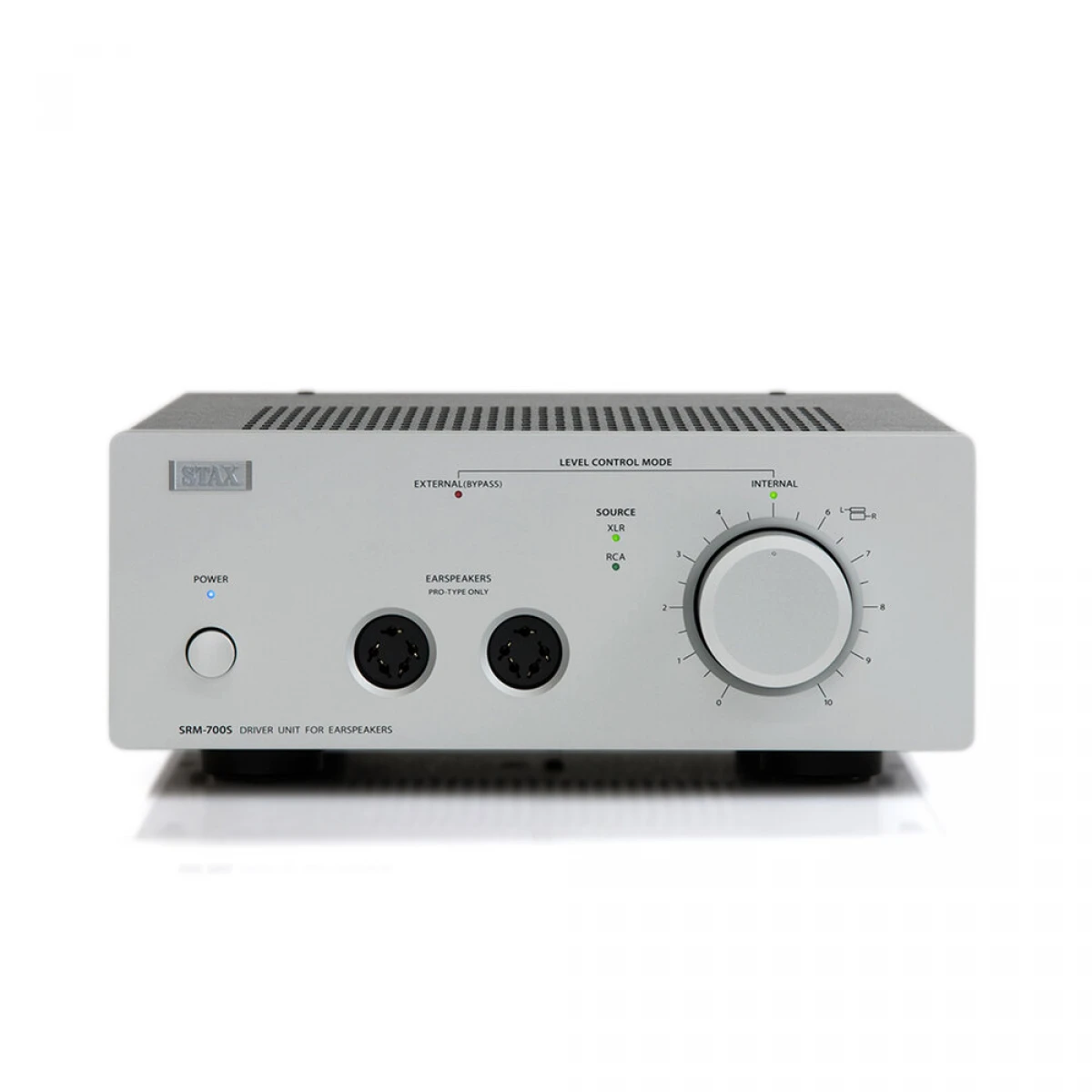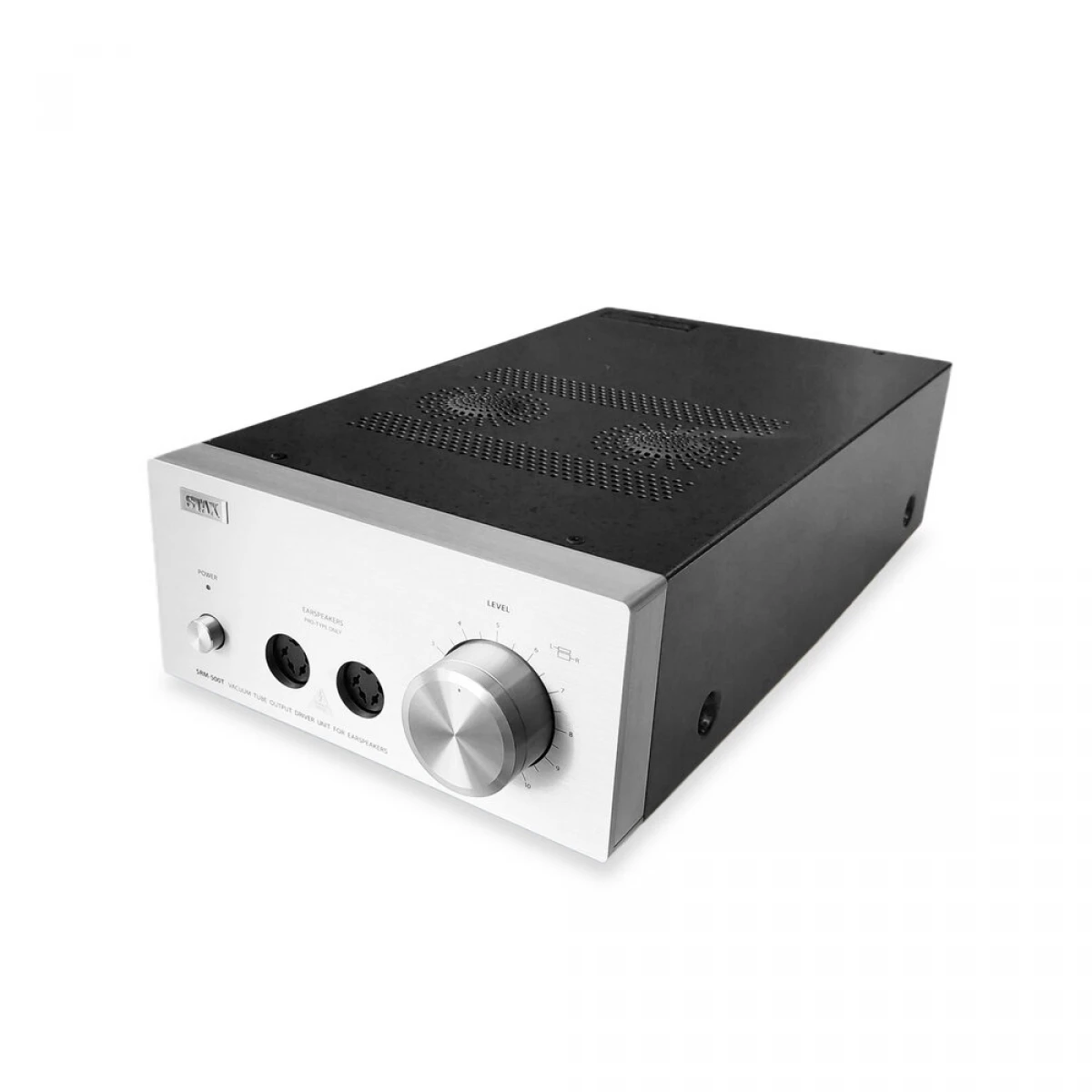Headphones amplifiers — Stax SRM-400S
Description, images, technical data and specifications
Stax SRM-400S
Image source — © Stax
Specifications
Model name
SRM-400S
Maximum Power, 32 Ohms (mW RMS per channel)
N/A
Maximum Power, 50 Ohms (mW RMS per channel)
N/A
Maximum Power, 300 Ohms (mW RMS per channel)
N/A
Maximum Power, 600 Ohms (mW RMS per channel)
N/A
Frequency response low +/- 3dB (Hz)
N/A
Frequency response high +/- 3dB (Hz)
90 000
Gain (dBu)
60
THD (% at 1V RMS, 300 ohms)
0.01
Signal to Noise Ratio (dB)
N/A
IMD (%, CCIR, 300 Ohms)
N/A
Crosstalk (dB, 20Hz-20KHz, 300 Ohms)
N/A
Output Impedance (Ohms)
N/A
Dimensions (mm)
195 x 102 x 376
Weight (g)
3400
Official link
More components

Headphones amplifiers
Stax SRM-270
The SRM-270S driver is equipped with input stages on selected FET transistors, the output stages are built according to the emitter repeater scheme. The frequency range is 0 Hz – 35 kHz. The nominal input level is 125 mV (with an output voltage of 100 V). The gain is 58 dB. Dimensions 132 x 153 x 38 mm, weight 540 g.

Headphones amplifiers
Stax SRM-D50
The device has an all-aluminum body with a velvet surface finish. An energetic voltmeter on the front panel adds life when listening to music. The standard branded 5-pin connector is suitable for any Stax headphones. The high demands on sound have led to a careful selection of amplifier components.

Headphones amplifiers
Stax SRM-700S
Fully semiconductor high-end driver amplifier Stax SRM-700S from the world-renowned manufacturer of electrostatic equipment. In the Stax SRM-700S amplifier driver, the developers of STAX, in addition to traditional solutions, for the first time applied a lot of innovations that had not previously been used in the design of proprietary equipment.

Headphones amplifiers
Stax SRM-700T
The hybrid driver-amplifier of the high-end Stax SRM-700T class from the world-famous manufacturer of electrostatic equipment. The Stax SRM-700T driver amplifier is a further development of the company's hybrid T-line of amplifiers, the first representative of which was the flagship SRM-T8000 Silver.

Headphones amplifiers
Stax SRM-500T
The Stax SRM-500T headphone amplifier is a tube driver, it is a receiver of the SRM-006tS model. The model has custom low-noise FET transistors in the first stage, and high–voltage 6FQ7/6CG7 dual triodes in the output stage. The scheme is traditional for the company, however, the developers report that they have managed to reduce power consumption and improve sound quality.


